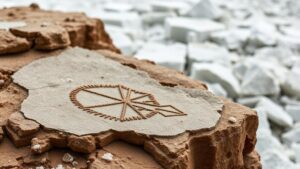Tracing Historical Brick Mason Yards for Construction Relic Discoveries
Tracing Historical Brick Mason Yards for Construction Relic Discoveries
The study of historical brick mason yards provides invaluable insights into construction practices, material use, and cultural heritage. This article explores the methodologies employed to trace these brick mason yards, the historical significance of the remnants found within them, and their relevance to contemporary construction practices.
The Historical Context of Brick Masonry
Brick masonry has played a pivotal role in construction since the dawn of civilization, with evidence of its use dating back to 7500 BC in the Middle East. The modern brick-making process began in the 19th century, when advancements in kiln technology significantly improved production efficiency and quality.
For example, in the United States, the development of locally sourced bricks in urban centers such as Philadelphia (founded in 1682) stimulated the growth of a brick industry. By the mid-19th century, the city not only witnessed a boom in construction but also the establishment of numerous brick mason yards, where laborers produced bricks that fundamentally shaped the city’s architectural landscape.
Methodologies for Tracing Brick Mason Yards
To effectively trace historical brick mason yards, researchers utilize a combination of archival research, archaeological surveys, and contemporary mapping technologies.
- Archival Research: This involves examining historical documents, such as city records, maps, and contractor blueprints. For example, the Philadelphia Historical Society holds a collection of documents detailing brick production in the 19th century.
- Archaeological Surveys: Physical digs at known masons sites reveal tools, old kilns, and equipment. Excavations at the former Tucker Brick Company in New York have uncovered invaluable artifacts that illustrate the methods used in brick making.
- Contemporary Mapping Technologies: Geographic Information Systems (GIS) facilitate spatial analysis of historical brick mason yards, allowing for the visualization of site locations relative to urban development patterns. Projects in cities like London have effectively utilized GIS to map historical construction sites.
Significance of Construction Relics
The relics unearthed from brick mason yards serve multiple purposes, ranging from cultural heritage interpretation to informing modern building practices.
For example, the discovery of an old brick kiln in Verona, Italy, dating back to the 15th century, provided insights into the material innovations of the Renaissance. Artisans were able to manipulate clay compositions, enhancing brick durability and aesthetic quality, which is still relevant to contemporary sustainable construction efforts.
Plus, relics help restore and maintain historical sites. The preservation of the New York City subway systems historic stations has involved extensive analysis of brickwork patterns, which reflect the citys architectural evolution since the late 19th century.
Challenges and Ethical Considerations
While tracing historical brick mason yards can yield significant discoveries, the process is not without challenges. Ethical considerations arise when excavating sites that may contain human remains or items sacred to indigenous populations.
Researchers must navigate local laws, cultural sensitivities, and community expectations. For example, the excavation of Indigenous burial grounds in Virginia has led to widespread scrutiny and discussions about the rights of descendants and the need for respectful treatment of archaeological finds.
Conclusion
Tracing historical brick mason yards is an essential endeavor that enhances our understanding of construction history, informs current building practices, and preserves cultural heritage. By employing a comprehensive methodology, including archival research, archaeological surveys, and modern mapping technologies, researchers can uncover the intricate narratives embedded within brick relics.
As cities continue to grow and evolve, integrating historical insights into contemporary practices will not only foster sustainable development but also enrich our architectural heritage.
Actionable Takeaways
- Seek local historical societies or libraries for archival materials related to brick masonry.
- Engage with archaeological teams to participate in or support local excavation projects.
- Use GIS technology for mapping historical construction sites to facilitate better urban planning based on historical contexts.



